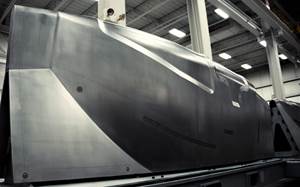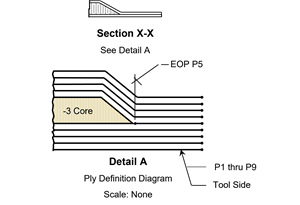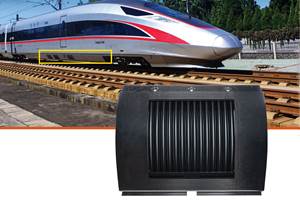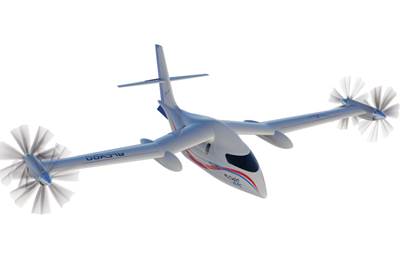EcoPulse hybrid aircraft demonstrator completes Preliminary Design Review
PDR completion paves the way toward validating the project’s feasibility and firming up the architecture for a first flight scheduled in 2022.
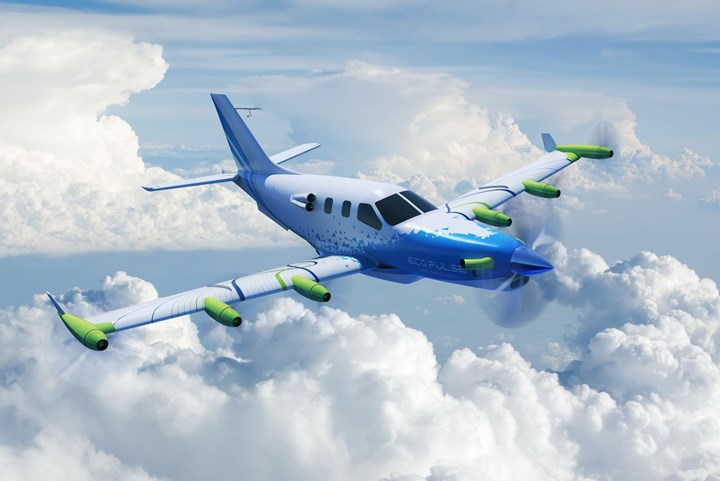
Photo Credit: Airbus
The EcoPulse distributed propulsion hybrid aircraft demonstrator — which is being developed by Daher (Wissous, France), Safran (Paris, France) and Airbus (Toulouse, France) with the support of France’s CORAC civil aviation research council — has successfully passed its Preliminary Design Review (PDR) as a first step toward validating the project’s feasibility and firming up the architecture for a first flight scheduled in 2022.
Incorporating a distributed propulsion configuration from Daher, Safran and Airbus, EcoPulse was originally unveiled at the 2019 Paris Air Show. Now, backed by the French government, with a reaffirmation of support coming in the framework of France’s recovery plan presented June 2020, this shared hybrid aircraft project is said to have the goal of helping to transform the aviation sector, such as enabling the development of technologies that reduce the environmental footprint of future commercial aircraft, which will in turn contribute to the air transportation sector’s decarbonization objectives by 2050.
In particular, the PDR validation has allowed for the Group to pursue next steps in regards to each company’s own distinct contributions toward the aircraft’s completion.
For example, after more than one year of development based on Daher’s TBM platform, the successful passing of its PDR will allow validation and freezing of the demonstrator’s baseline configuration, as well enable Daher to confirm the hybrid distributed propulsion system’s level of safety and compatibility with the aircraft.
The project is now entering the assembly and integration phase at Daher’s Tarbes, France, site, where the initial components were designed and delivered.
Safran, which is responsible for EcoPulse’s distributed hybrid-electric propulsion system, has also finalized the technical configuration of its six electric thrusters. They will be fitted with 50 kilowatt (kW) ENGINeUS electric motors with integrated electronics and patented air cooling, as well as propellers supplied by DUC Hélices (France). The Safran ENGINeUS motor will be submitted for EASA certification, the same type as granted for a turboshaft engine.
Completion of the PDR enables Safran to finalize the technical configuration of the aircraft’s electric thrusters, Airbus’ scheduling of wind tunnel and nacelle behavioral testing and Daher’s assembly and integration phase.
Safran notes that additional validations include the installation interfaces for the propulsion system’s other components, along with the power management system, the turbogenerator and the high-voltage wiring that will supply electrical power to the thrusters. The turbogenerator, which performed its first test bench runs in 2018, will soon undergo additional tests.
The next step for Safran will be its delivery of an initial electric thruster to Airbus for wind tunnel and endurance testing, in preparation for qualification of the thrusters’ use on EcoPulse's first flight.
“EcoPulse is an ambitious project, and designing hybrid propulsion on this new aircraft architecture is a key skill that Safran is proud to master,” says Stéphane Cueille, senior executive vice president and CTO, Research and Technology and Innovation at Safran. “Mobility needs are changing, and the Group is responding to them by offering advanced and sustainable technologies that have taken shape with this important milestone reached today.”
Completion of the EcoPulse preliminary design review has also enabled Airbus — currently involved in the demonstrator aircraft’s aerodynamic modeling — to schedule the start of wind tunnel testing for propeller/nacelle assembly during the first quarter of 2021. The electric engine, supplied by Safran, will be tested as well. The results of these tests will enable the identification of the propeller’s performance characteristics when associated with an electric engine, and validate the engine cooling process.
In addition to these wind tunnel tests, Airbus also is planning to simulate the nacelle’s aerodynamic behavior.
“The EcoPulse demonstrator program is an important step in our ambition to decarbonize the aeronautical industry. It will allow us to study how distributed hybrid propulsion could be integrated into the aircraft of tomorrow and significantly reduce their environmental impact,” adds Jean-Brice Dumont, executive vice president, Engineering, Airbus.
Related Content
Jeep all-composite roof receivers achieve steel performance at low mass
Ultrashort carbon fiber/PPA replaces steel on rooftop brackets to hold Jeep soft tops, hardtops.
Read MoreNine factors to consider when designing composites cure tooling
Gary Bond discusses the common pitfalls and compromises when designing good cure tooling and their holistic significance for a robust composite production process.
Read MoreThe basics of composite drawing interpretation
Knowing the fundamentals for reading drawings — including master ply tables, ply definition diagrams and more — lays a foundation for proper composite design evaluation.
Read MoreComposite sidewall cover expands options for fire-safe rail components
R&D project by CG Rail explores use of carbon fiber-reinforced thermoplastics and recycled manufacturing scrap to meet fire safety, weight and volume targets.
Read MoreRead Next
Avions Mauboussin launches STOL hybrid-hydrogen aircraft
Hybrid Zéphyr engine for electric/hydrogen capabilities and a natural fiber composite-based design revive and reinvent an energy-efficient aircraft brand.
Read More“Structured air” TPS safeguards composite structures
Powered by an 85% air/15% pure polyimide aerogel, Blueshift’s novel material system protects structures during transient thermal events from -200°C to beyond 2400°C for rockets, battery boxes and more.
Read MoreAll-recycled, needle-punched nonwoven CFRP slashes carbon footprint of Formula 2 seat
Dallara and Tenowo collaborate to produce a race-ready Formula 2 seat using recycled carbon fiber, reducing CO2 emissions by 97.5% compared to virgin materials.
Read More

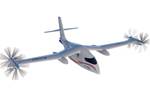










.jpg;maxWidth=300;quality=90)






